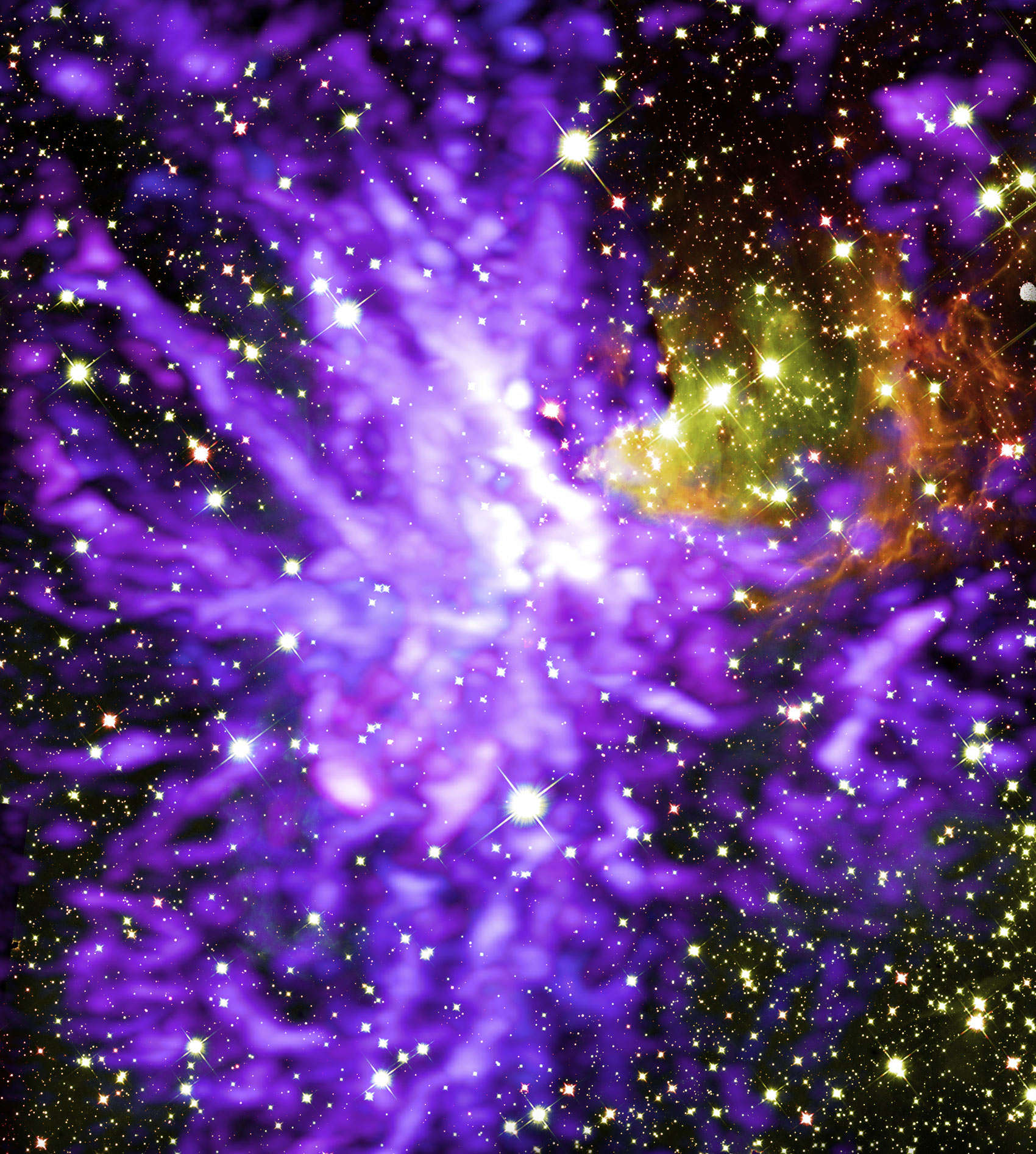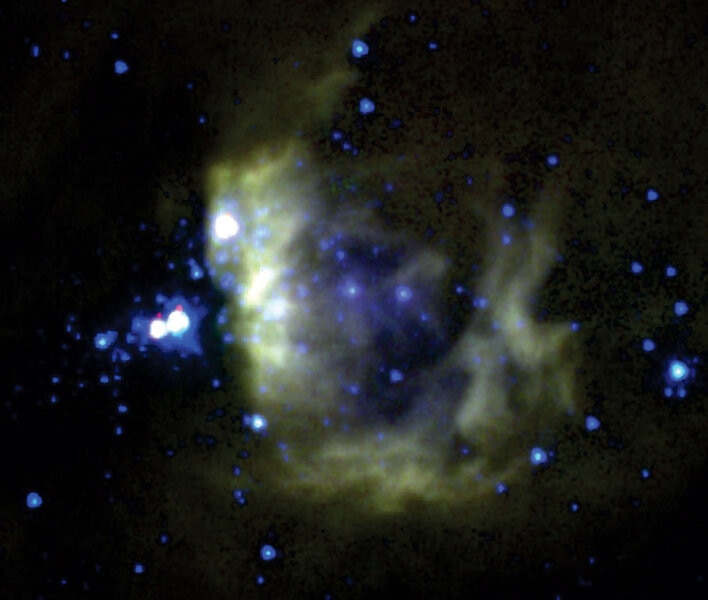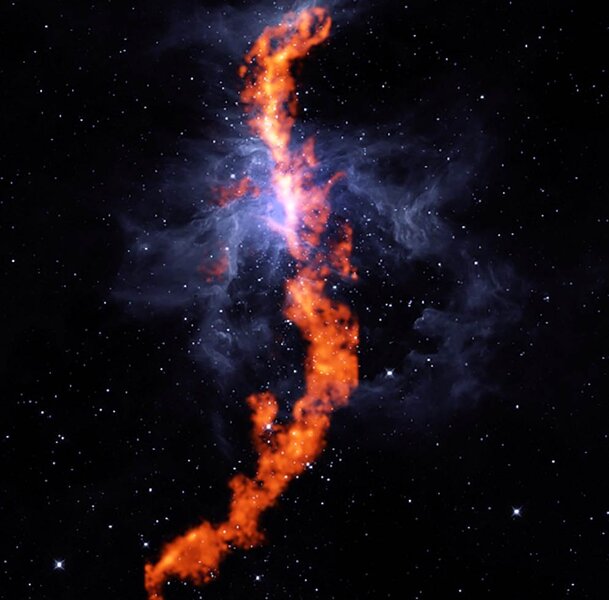Create a free profile to get unlimited access to exclusive videos, sweepstakes, and more!
The spectacular ins and outs of starbirth

After centuries of wondering, we're starting to get a pretty good understanding of how stars are born.
It's been pretty clear that they condense out of clouds of gas and dust called nebulae. But how, exactly?
New observations of a distant nebula called G286.21+0.17 (also called BYF73, so let's go with that, shall we?) has some pretty good clues. It's about 8,000 light years away, part of the immense Carina star-forming complex which itself is a collection of dozens of nebulae all churning out stars. BYF73 is forming a cluster of stars, hundreds or thousands of stars all born more or less at the same time, held together into a group by their own gravity.
Astronomers observed BYF73 using Hubble as well as the Atacama Large Millimeter/submillimeter Array (or ALMA), and what they found was almost literally a pipeline of gas into and out of the nebula:
Whoa. It looks pretty chaotic, but in fact this is a fairly well-organized star nursery.
Hubble's part of the image is in red and yellow, and shows stars and gas. In the center and upper right, young, massive stars have already formed near the edge of the cloud. They blow powerful winds of subatomic particles (like the solar wind but much faster and more energetic) and blast their surrounding with fierce ultraviolet light. This erodes the cloud and creates a blowout, where the stars have carved a hole in the side of the cloud. All the way to the right you can see some reddish filaments of gas that show where the cavity erupted.
The purple is from ALMA, showing colder molecular gas (literally, made up of molecules of things like carbon monoxide, which is very common in gas clouds like this). Unlike the Hubble image, the ALMA data clearly show the gas is in streamers, filaments, all pointing toward and converging on the center of the star cluster.
That's no coincidence. The ALMA observations show the gas in these filaments is flowing toward the center of BYF73, feeding the nebula from which the stars are born with gas. They also show lots of dense clots of gas in the filaments, which themselves will probably form stars in the future once they settle down inside the nebula.
Filaments like this have been known for a long time, and they're commonly seen around star-forming nebulae. They clearly play an important role in the process, but they're entirely invisible in the kind of light we see, so we need telescopes like ALMA to spot and map them.
The Hubble observations were taken in two groups three years apart, and are in the infrared — visible light has a hard time getting out through all the gas and dust, and infrared penetrates it more easily, allowing starlight to get out. There were two main purposes. One was to look at the colors of stars (comparing their light in one infrared wavelength versus another), because very young and still-forming stars surrounded by disks of material have specific colors that make them easier to find. Out of more than 5,000 objects seen, over 10% had these colors, so a lot of stars are forming here.
The second was to look for changes in brightness of stars over the three years between observations. Young stars tend to change brightness on short timescales as they form, and this can tell us about what they're doing. Over 360 stars were found to have done this, including one that, over 8 years (using observations from other telescopes) has increased its brightness in the infrared by 25 times!
This is probably what's called an FU Orionis star, and it's not clear why these stars increase their luminosity so much in such a short time. One idea is that the disk around them from which they're forming suddenly dumps a huge amount of material on them extremely rapidly, causing a sudden uptick in brightness that can last for years. This star BYF73 is still in outburst, and I wonder how long it'll keep this up. Given it seems to only have a mass of 0.12 times the Sun's, it's awfully small to have such a furious increase in energy. Amazing.
So in this combined image from Hubble and ALMA we're seeing stars that have been around a little while, ones still forming, and even pre-stellar clumps of gas that will, someday, be stars themselves. It's one-stop shopping for seeing star birth.
The invention of the telescope opened our eyes to the Universe, but the invention of telescopes that see light we can't opened our minds to the science of the Universe even more. We're really starting to understand it, including how we ourselves came to be in the cosmos.

















